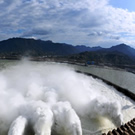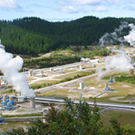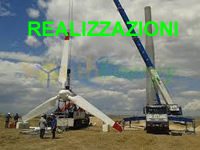Hydroelectric Plant
- Details
- Hits: 4988

A hydroelectric plant is composed of civil works and hydraulic dam (or crossbar barrier, gripping system, bath of load, works for conveying and refund, penstocks, building of the central) and electromechanical machinery (hydraulic turbines, generators, electrical panels, control systems).
Biomass Installations
- Details
- Hits: 6412

With the term "biomass" must be understood as "the biodegradable fraction of products, waste and residues from agriculture (including vegetal and animal substances), forestry and related industries, as well as the biodegradable fraction of industrial and municipal waste".
The definition includes a wide range of materials, virgins or residual working agricultural and industrial, that can present in various physical states, with a broad spectrum of calorific values. Depending on the type of biomass, and then the most appropriate technology for its energy, as well as depending on the size of interest and the final uses of the energy produced, thermal and/or electrical, you can move toward a plurality of system solutions.
Geothermoelectric Plants
- Details
- Hits: 4952

A plant geotermoelettrico has the function to transform into electricity heat energy present in geothermal fluid (water vapor or a mixture of water and water vapor) that form thanks to the contact of water with layers of hot rock.
The peculiarity of the basins geotermoelettrici exploited by such equipment is due to the fact that the geothermal fluid is available.
Biogas Plant
- Details
- Hits: 4929

The biogas, consisting mainly of methane (at least 50 %) and carbon dioxide, it arises as a result of a bacterial process of anaerobic fermentation of organic material of vegetable and animal origin.
The Community legislation (Dir. 2001 /77/CE ) and national (D. Lgs 387/03) on the promotion of renewable sources explicitly includes among them the "landfill gas, sewage treatment plant gas and biogases".
As a matter of fact, all three kinds of gases are of biogas, but their separate listing in callback legislation highlights the variety of organic matrices from which the biogas can be produced: waste disposed in landfills or organic fraction municipal waste, sewage sludge, manure, animal waste, organic waste agro-industrial, crop residues, energy crops.









